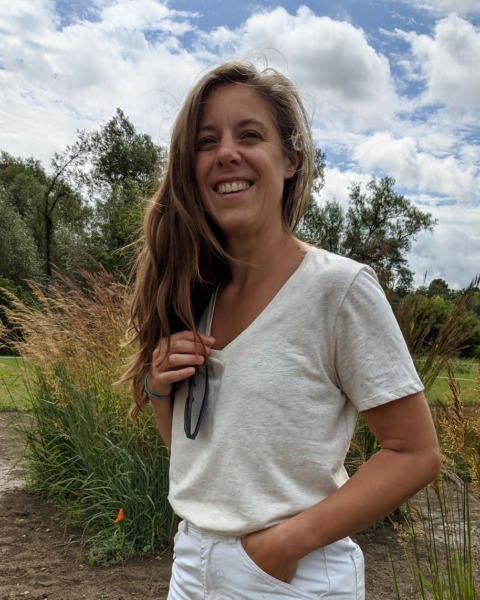Back
Latebreaking Poster
Poster Type: Latebreaking Poster
Poster Session:: Disease And Epidemiology (Latebreaking)
LB 12-156 - Crop associated virus dynamics in remnant and restored native grasslands in New York State
Thursday, August 18, 2022
5:00 PM – 6:30 PM EDT
Located in: ESA Exhibit Hall

Jasmine S. Peters
PhD
Cornell University, United States- AP
Alison G. Power
Cornell University, United States
Presenting Author(s)
Coauthor(s)
Background/Question/Methods:
Grasslands are one of the most threatened ecosystems globally and are high priority for restoration and management. The primary drivers of habitat loss are agriculture, development, and fire suppression. Prairie grasslands are fire adapted and may be managed with prescribed burns. One potential but understudied threat to grasslands is the spillover of crop plant pathogens from agricultural landscapes into native non-crop hosts. The barley and cereal yellow dwarf viruses (YDVs) are widespread, economically damaging grain crop pathogens vectored by grain aphids. YDVs can infect and overwinter in native perennial grasses, though our understanding of the distribution and impact of this virus is limited. We conducted a regional survey of 10 restored and remnant prairie grasslands with different management strategies, including burning. Our aim was to determine if YDVs infect big bluestem (Andropogon gerardi), Indiangrass (Sorghastrum nutans), and little bluestem (Schizachryium scoparium) in New York, and if so, how land-use history and management impact disease dynamics. We collected 50 leaf tissue samples per species along a randomized transect in each grassland and tested them for YDVs with an enzyme-linked immunosorbent assay. We used generalized linear mixed-effects modeling to analyze the effect of host species, land-use history, and management on disease prevalence.
Results/Conclusions:
Our work is the first to document that YDVs are widespread in both restored and remnant native prairie grasses in New York. We found that big bluestem has a significantly higher prevalence of infection than other prairie grass species (25%, p < 0.001), across all grasslands surveyed. Indiangrass and little bluestem had lower infection prevalence at 14% and 11%, respectively. Virus species diversity was characterized for each host grass with BYDV-PAV, -MAV, and CYDV-RPV detected in all species. Co-infected plants were also identified, and the extent of this phenomenon in non-crop hosts remains underexamined. Our analysis found no significant difference between pathogen prevalence in restored versus remnant grasslands. In contrast, burned grasslands were correlated with a lower prevalence of YDVs than unburned (8% versus 24%, p = 0.003), when controlling for host species. Fire has been reported elsewhere to reduce fungal pathogens and insect pests in agricultural systems as well as native grasslands. Our study highlights an additional benefit of fire in grasslands that deserves closer examination. We are currently conducting a multi-year common garden experiment to examine the effect of fire on YDV prevalence and host response in native prairie grasses from populations surveyed in this study.
Grasslands are one of the most threatened ecosystems globally and are high priority for restoration and management. The primary drivers of habitat loss are agriculture, development, and fire suppression. Prairie grasslands are fire adapted and may be managed with prescribed burns. One potential but understudied threat to grasslands is the spillover of crop plant pathogens from agricultural landscapes into native non-crop hosts. The barley and cereal yellow dwarf viruses (YDVs) are widespread, economically damaging grain crop pathogens vectored by grain aphids. YDVs can infect and overwinter in native perennial grasses, though our understanding of the distribution and impact of this virus is limited. We conducted a regional survey of 10 restored and remnant prairie grasslands with different management strategies, including burning. Our aim was to determine if YDVs infect big bluestem (Andropogon gerardi), Indiangrass (Sorghastrum nutans), and little bluestem (Schizachryium scoparium) in New York, and if so, how land-use history and management impact disease dynamics. We collected 50 leaf tissue samples per species along a randomized transect in each grassland and tested them for YDVs with an enzyme-linked immunosorbent assay. We used generalized linear mixed-effects modeling to analyze the effect of host species, land-use history, and management on disease prevalence.
Results/Conclusions:
Our work is the first to document that YDVs are widespread in both restored and remnant native prairie grasses in New York. We found that big bluestem has a significantly higher prevalence of infection than other prairie grass species (25%, p < 0.001), across all grasslands surveyed. Indiangrass and little bluestem had lower infection prevalence at 14% and 11%, respectively. Virus species diversity was characterized for each host grass with BYDV-PAV, -MAV, and CYDV-RPV detected in all species. Co-infected plants were also identified, and the extent of this phenomenon in non-crop hosts remains underexamined. Our analysis found no significant difference between pathogen prevalence in restored versus remnant grasslands. In contrast, burned grasslands were correlated with a lower prevalence of YDVs than unburned (8% versus 24%, p = 0.003), when controlling for host species. Fire has been reported elsewhere to reduce fungal pathogens and insect pests in agricultural systems as well as native grasslands. Our study highlights an additional benefit of fire in grasslands that deserves closer examination. We are currently conducting a multi-year common garden experiment to examine the effect of fire on YDV prevalence and host response in native prairie grasses from populations surveyed in this study.
